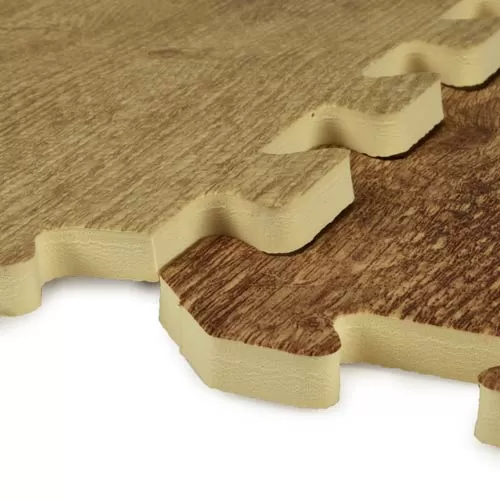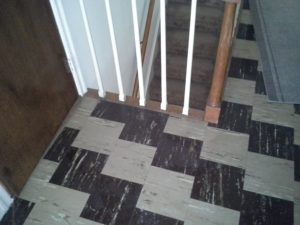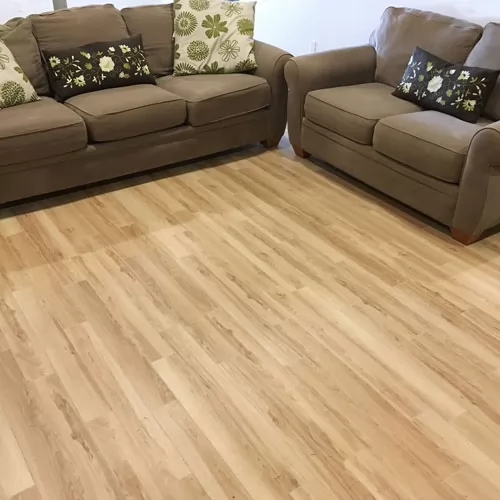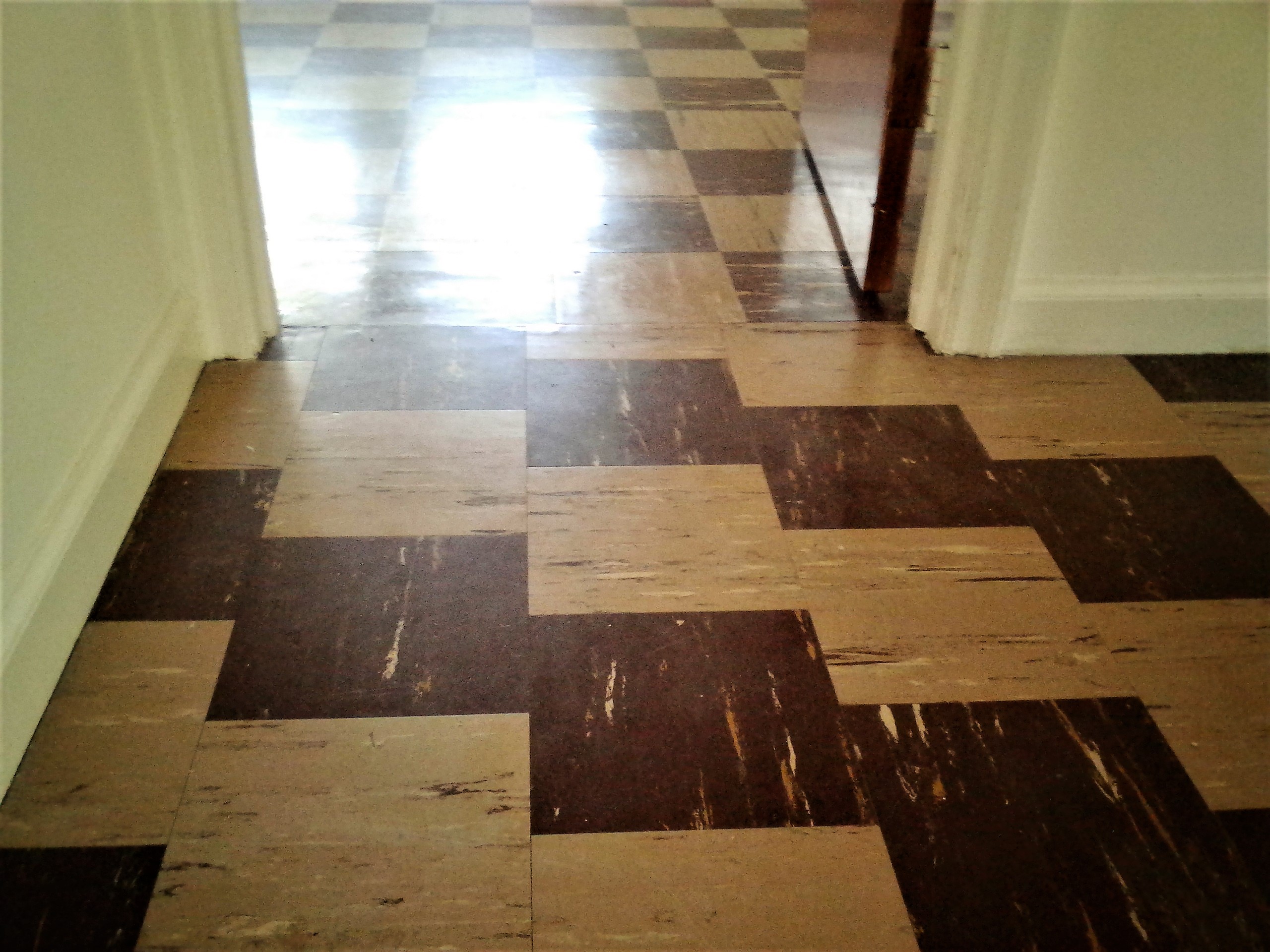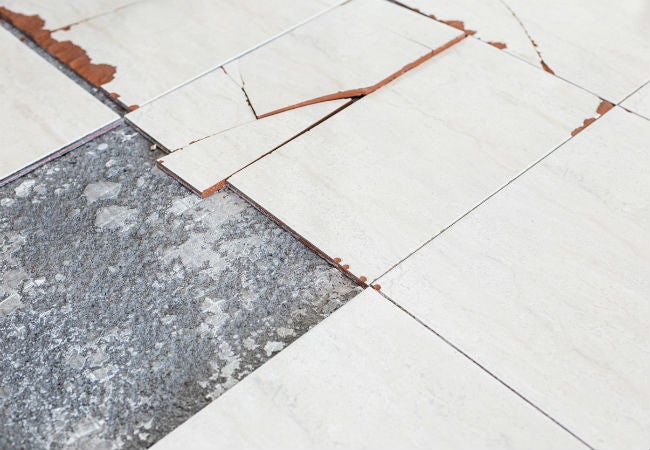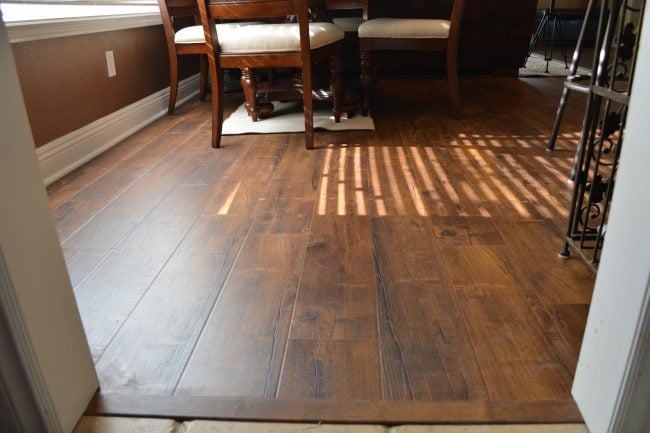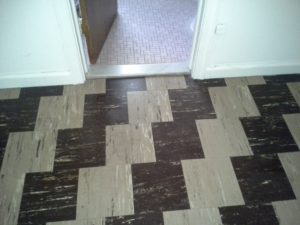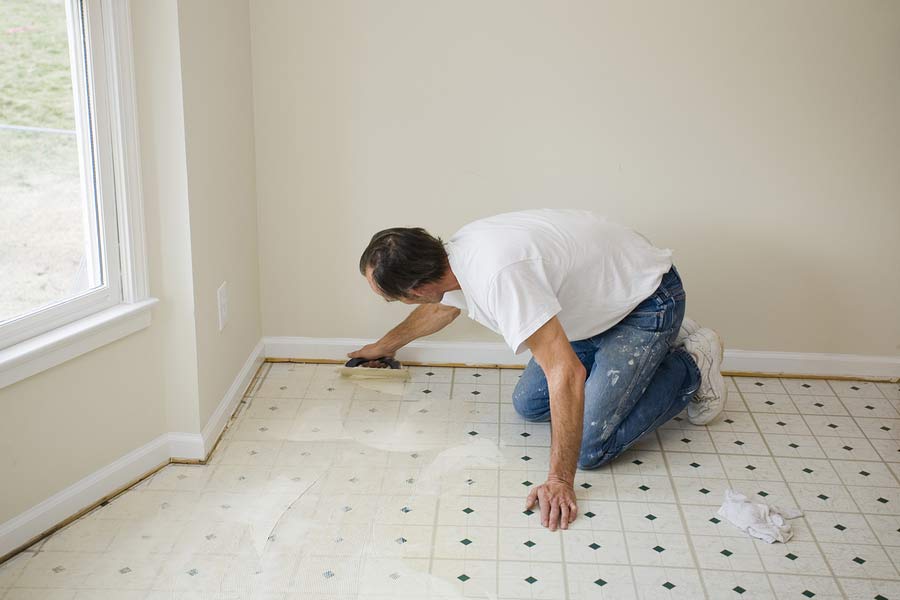Is It Safe to Install Laminate Flooring Over Asbestos Tile?
Asbestos tile was a popular flooring option in the past due to its durability and fire-resistant properties. However, over time, it has been discovered that asbestos fibers can pose serious health risks when released into the air. If you have asbestos tile in your home and are considering installing laminate flooring, it is important to understand the potential risks involved. Let’s discuss the safety concerns and considerations when installing laminate flooring over asbestos tile.
- The Health Risks of Asbestos: Asbestos is a naturally occurring mineral that was commonly used in building materials until the late 1970s. When asbestos-containing materials are damaged or disturbed, microscopic fibers can become airborne and easily inhaled. Prolonged exposure to asbestos fibers can lead to serious health conditions such as lung cancer, asbestosis, and mesothelioma. It is crucial to handle asbestos-containing materials with caution to minimize the risk of exposure.
- Understanding the Safety of Laminate Flooring: Laminate flooring is a popular choice for homeowners due to its affordability, durability, and ease of installation. However, when installing laminate flooring over asbestos tile, it is important to consider the potential risks. While laminate flooring does not contain asbestos, it can still pose a risk if the asbestos tile beneath it is disturbed during installation or removal.
- Professional Evaluation and Testing: Before considering the installation of laminate flooring over asbestos tile, it is recommended to hire a professional asbestos abatement contractor to assess the condition of the existing tile. They will conduct thorough testing to determine the presence and extent of asbestos fibers. This evaluation will help determine if it is safe to proceed with the installation or if further remediation measures are necessary.
- Encapsulation as an Option: In some cases, encapsulating the asbestos tile may be viable. This involves applying a sealant over the tile to prevent the release of asbestos fibers. However, encapsulation should only be done by professionals trained in asbestos abatement to ensure proper containment and safety.
- Removal by Professionals: If the asbestos tile is in poor condition or poses a significant risk, complete removal may be necessary. It is crucial to hire licensed asbestos abatement professionals to safely remove and dispose of asbestos-containing materials. They will follow strict protocols to minimize the release of asbestos fibers during the removal process.
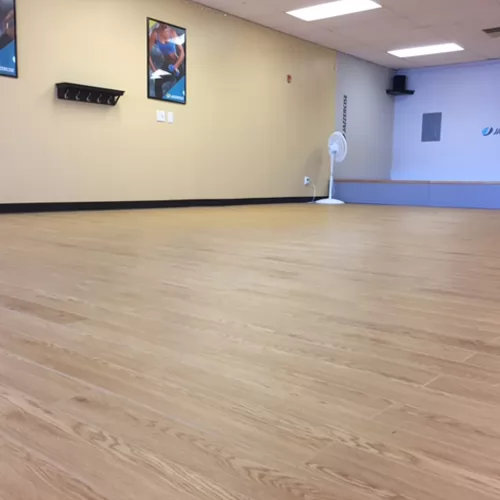
Preparing for Installation
Before installing laminate flooring over asbestos tile, it is crucial to assess the condition of the existing tile. This step is essential to determine whether the tile is suitable for installation or if further actions, such as encapsulation or removal, are required. Let’s talk about the process of assessing the condition of asbestos tile and the factors to consider before proceeding with laminate flooring installation.
- Visual Inspection: Start by visually inspecting the asbestos tile. Look for signs of damage, such as cracks, chips, or loose tiles. Pay attention to any areas where the tile may have been disturbed or broken. Additionally, check for signs of water damage or mold growth, as these can further compromise the integrity of the asbestos tile.
- Asbestos Testing: While a visual inspection can provide some information, it is essential to conduct asbestos testing to confirm the presence of asbestos fibers in the tile. Hire a licensed asbestos abatement professional to collect samples and send them to a certified laboratory for analysis. This testing will provide accurate information about the asbestos content and help determine the appropriate course of action.
- Assessing Tile Stability: Stability is a crucial factor when considering laminate flooring installation over asbestos tile. If the tile is firmly adhered to the subfloor and shows no signs of deterioration, it may be suitable for encapsulation or laminate flooring installation. However, if the tile is loose, brittle, or crumbly, it may pose a risk and require complete removal.
- Moisture and Mold Issues: Moisture and mold problems can significantly affect the condition of asbestos tile. Excessive moisture can weaken the tile adhesive, leading to tile detachment or crumbling. Mold growth indicates a moisture issue, which needs to be addressed before laminate flooring installation. If significant moisture or mold problems are present, it may be necessary to remove the asbestos tile entirely.
- Professional Evaluation: To ensure an accurate assessment of the asbestos tile condition, it is recommended to consult with a licensed asbestos abatement professional. They have the expertise and knowledge to identify potential risks and provide appropriate recommendations. Their evaluation will help determine the best course of action for installing laminate flooring over asbestos tile.
Options for Dealing with Asbestos Tile Before Installing Laminate Flooring
Dealing with asbestos tile before installing laminate flooring is a critical step to ensure the safety of your home and family. Depending on the condition of the asbestos tile, there are two common options: removal or encapsulation. Let’s explore these options in detail, providing insights into the process, benefits, and considerations for each.
Complete Removal: Complete removal of asbestos tile involves safely removing and disposing of the entire flooring system, including the tiles and the adhesive. This option is recommended when the asbestos tile is significantly damaged, friable (crumbling easily), or poses a high risk due to its condition. It is essential to hire licensed asbestos abatement professionals who follow strict safety protocols to minimize the release of asbestos fibers during the removal process.
Encapsulation: Encapsulation is an alternative option to consider when the asbestos tile is in relatively good condition and not significantly damaged. This method involves applying a specialized sealant or encapsulant over the asbestos tile to prevent the release of asbestos fibers. Encapsulation can effectively contain the asbestos and provide a barrier for the laminate flooring installation. However, it is crucial to note that encapsulation should only be performed by professionals trained in asbestos abatement to ensure proper containment and adherence to safety guidelines.
Benefits of Removal: Complete removal of asbestos tile offers the most comprehensive solution, eliminating any potential risks associated with the presence of asbestos fibers. By completely removing the asbestos-containing materials, you can ensure a safe and healthy environment for your family. It also allows for a clean slate for the installation of laminate flooring, ensuring a smooth and secure base.
Benefits of Encapsulation: Encapsulation can be a suitable option when the asbestos tile is in good condition, minimizing the disturbance of the asbestos fibers. It is a less invasive and cost-effective approach compared to complete removal. Encapsulation also provides a protective layer for the laminate flooring, enhancing its durability and longevity.
Considerations and Professional Guidance: When deciding between removal and encapsulation, several factors need to be considered, including the condition of the asbestos tile, budget, timeline, and personal preferences. It is crucial to seek professional guidance from licensed asbestos abatement contractors who can assess the specific situation and provide expert recommendations based on their expertise and experience. Their knowledge will ensure that you make an informed decision that prioritizes safety and complies with local regulations.
Choosing the Right Underlayment
Choosing the right underlayment is a crucial step when installing laminate flooring over asbestos tile. The underlayment serves as a barrier between the new flooring and the existing tile, providing stability, insulation, and moisture protection. Let’s discuss the importance of selecting the appropriate underlayment and the factors to consider for a smooth and safe laminate flooring installation.
Moisture Resistance: One essential factor to consider when selecting underlayment is its moisture resistance properties. Asbestos tile can be susceptible to moisture, and moisture can compromise the integrity of the laminate flooring. Look for underlayment materials that have a moisture barrier, such as moisture-resistant foam or vapor barriers. This will help prevent moisture from seeping through the underlayment and reaching the laminate flooring.
Sound Absorption: Underlayment can also contribute to sound reduction by absorbing impact noise and minimizing the transmission of sound between floors. Choose underlayment materials with sound-dampening properties, such as cork or rubber, to reduce noise levels and create a more comfortable living environment.
Smooth Surface and Subfloor Preparation: Underlayment helps create a smooth surface for laminate flooring installation by filling in minor imperfections in the subfloor. Ensure that the underlayment material you choose is capable of providing a level surface, enhancing the aesthetics and performance of the laminate flooring. Additionally, proper subfloor preparation, including thorough cleaning and removal of any debris, is essential to ensure the underlayment adheres well and provides optimal support.
Thermal Insulation: Underlayment can provide thermal insulation, helping to regulate the temperature in the room and provide additional comfort. Look for underlayment materials with thermal properties, such as foam or cork, to enhance the insulation of the laminate flooring.
Underlayment Compatibility: Ensure that the underlayment you choose is compatible with laminate flooring installation. Read the manufacturer’s recommendations and specifications to ensure that the underlayment is suitable for use with laminate flooring. Consider factors such as the thickness, density, and compressibility of the underlayment to ensure proper installation and performance.
Installing Laminate Flooring Over Asbestos Tile Safely and Effectively
Installing laminate flooring over asbestos tile requires careful planning and adherence to best practices to ensure a safe and effective installation process. Here we provide expert tips and guidance to help you navigate the installation process smoothly while prioritizing safety and achieving optimal results.
Prepare the Work Area: Before starting the installation, create a safe and clean work area. Ensure proper ventilation by opening windows and doors or using fans. Use plastic sheeting to seal off the work area from the rest of the house, minimizing the spread of dust and debris. It is also essential to wear personal protective equipment, including gloves, masks, and disposable coveralls, to prevent exposure to asbestos fibers.
Follow Manufacturer’s Guidelines: Carefully read and follow the manufacturer’s guidelines provided with your laminate flooring. These guidelines will provide specific instructions for installation, including subfloor preparation, acclimation, and installation techniques. Adhering to these guidelines will ensure a proper and warranty-compliant installation.
Use a Floating Floor Method: When installing laminate flooring over asbestos tile, it is recommended to use the floating floor method. This involves laying the laminate planks or tiles over the underlayment without attaching them directly to the asbestos tile. This method allows for easier removal or replacement of the laminate flooring in the future, without disturbing the asbestos tile.
Maintain a Gap: Leave a small expansion gap around the perimeter of the room and any fixed objects, such as walls, door frames, and cabinets. This gap allows for natural expansion and contraction of the laminate flooring due to temperature and humidity changes. Consult the manufacturer’s guidelines for the recommended size of the expansion gap.
Properly Dispose of Waste: Dispose of all waste materials, including the asbestos tile and any debris generated during the installation process, following local regulations and guidelines. Contact your local waste management or environmental agency to understand the proper disposal procedures for asbestos-containing materials. It is essential to handle and dispose of asbestos waste safely to prevent any potential health hazards.
Regular Maintenance and Cleaning: Once the laminate flooring is installed, establish a regular maintenance and cleaning routine to keep it in optimal condition. Avoid using abrasive cleaners or excessive moisture, as these can damage the laminate flooring or the underlayment. Follow the manufacturer’s recommendations for cleaning products and techniques to maintain the appearance and longevity of the flooring.
Flooring That Can Be Installed Over Asbestos Tile
Asbestos Flooring-Do you really need that abatement?
Asbestos Floor Tiles 101: What to Know About this Old Home Hazard
Installing Hardwood over Asbestos Tiles HomeAdvisor
Asbestos Flooring-Do you really need that abatement?
The truth about asbestos vinyl flooring Chemcare
Related Posts:

